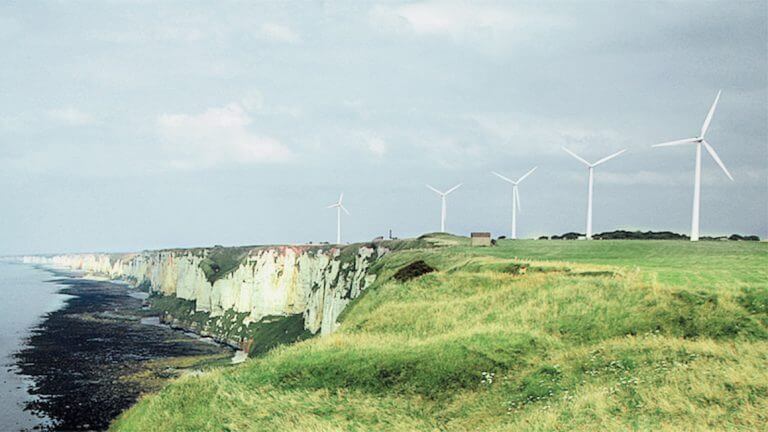Communication in the Antarctic
To the reference report






For safety reasons, the uninterrupted power supply of obstruction lighting and lubricant pumps during the construction phase and during maintenance work is indispensable for wind power plants.
| Output requirement for obstruction lighting | Between 50 and 100 W |
| Output requirement for pumps | About 25 W |
During the construction phase and during maintenance work on a wind farm, sometimes no power is available from the mains. Still, the operation of obstruction lighting and pumps has to be ensured. The autonomous operation of up to three months usually causes high service and operating costs for batteries and generators, as well as significant maintenance.
The EFOY & EFOY Pro fuel cell will supply your wind power plant with power for weeks or even months without any user intervention. The EFOY Pro can either be installed in the nacelle or the tower of the wind power plant.
The previously required on-site visits (approximately every two days) to replace the batteries are avoided by using the EFOY Pro fuel cell, therefore significantly reducing operating costs.
Integration of the EFOY Pro
in wind power plants
“EFOY Pro saves money”
In 20 days of operation, generators consume 8,000 litres of diesel, while fuel cells only require 75 litres of their own fuel. This not only saves money but also logistics efforts.
Mr Jörg Hebestadt, CEO Windkraft Service GmbH
EFOY energy solutions used worldwide
The lighting of obstructions is a safety procedure to ensure any structures that may interfere with aviation are adequately visible. These structures include towers, tall buildings, wind farms and fences in some areas with low-flying aircraft. Regulators in the aviation industry may stipulate the lighting of obstructions in terms of design and functionality. The lighting of obstructions ensures aircraft operators can navigate safely during the day and night time using clear markers. [1]
The lighting of obstructions is a procedural and regulatory requirement for any structures that may obstruct aviation. The following are some of the areas that use the lighting of obstructions to mark tall structures:
Lighting obstructions is not only mandatory but an essential part of safety in aviation. Aircrafts transport people, machinery and other valuable resources from different locations throughout the world. Obstruction lighting ensures these activities move smoothly by creating an aerial picture for pilots.
The lighting of obstructions is a safety procedure to ensure that all structures or fixed obstructions that could affect air traffic are sufficiently visible.
Lighting of Obstructions is applied in the following areas:
The following types of obstruction lighting are available: